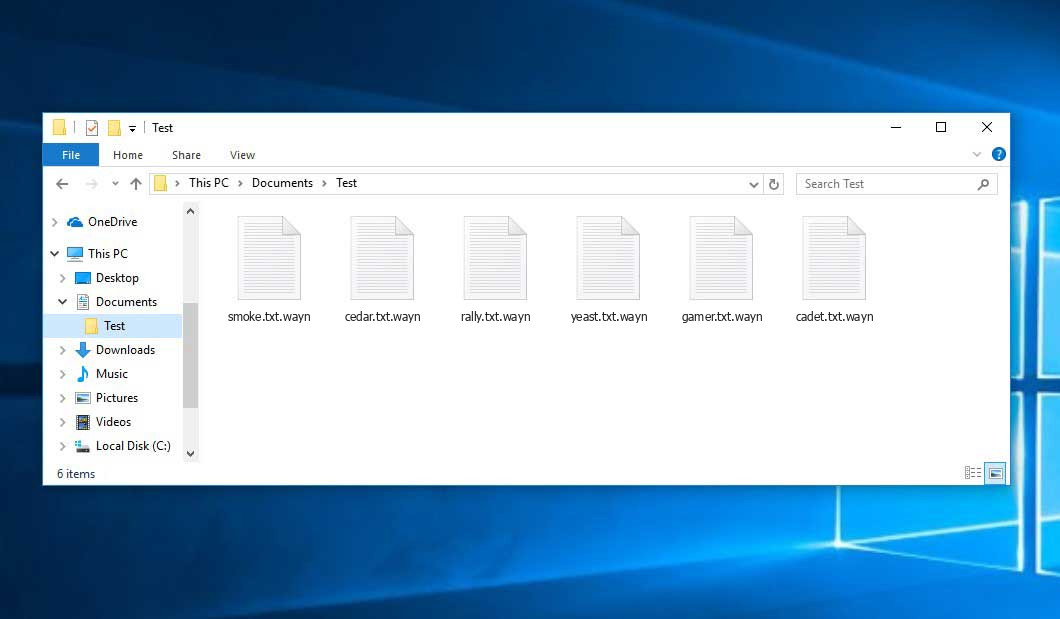While analyzing malware samples submitted to VirusTotal1, I discovered the Wayn ransomware, a member of the STOP/Djvu ransomware family, encrypting files and appending the “.wayn” extension to their original filenames. For example, a file originally named “a.jpg” would be renamed as “a.jpg.wayn“, while “b.doc” would transform into “b.doc.wayn“.
Wayn is a member of the Djvu malware family, which is notorious for its connection to other malicious software like RedLine Stealer and Vidar. These additional malware strains are specifically designed to steal sensitive information from compromised systems. Cybercriminals have been observed distributing ransomware from the Djvu family in conjunction with these harmful programs.
I have compiled an extensive list of potential solutions, tips, and best practices to neutralize the Wayn virus and recover encrypted files. Depending on the circumstances, file recovery may be either straightforward or impossible.
The Wayn ransomware employs a unique key for each victim, with one exception:
- If Wayn fails to establish a connection with the command and control server (C&C Server) before initiating the encryption process, it resorts to the offline key. This particular key is shared among all victims, offering the possibility of decrypting files affected by a ransomware attack.
What is Wayn virus?
☝️ It can be correctly identify as a STOP/DJVU ransomware-type infection.
The Wayn ransomware is a kind of threat that encrypted your files and then forces you to pay to restore them. The image below gives a clear vision of how the files with “.wayn” extension look like:
| Name | Wayn Virus |
| Ransomware family2 | DJVU/STOP3 ransomware |
| Extension | .wayn |
| Ransomware note | _readme.txt |
| Ransom | From $490 to $980 (in Bitcoins) |
| Contact | [email protected], [email protected] |
| Detection | Win32.Virlock.Gen.4, NSIS/Injector.MK, Generic.Trojan.Malicious.DDS |
| Symptoms |
|
| Fix Tool | To remove possible malware infections, scan your PC: 6-day free trial available. |
This message asking payment is for restore files via decryption key:
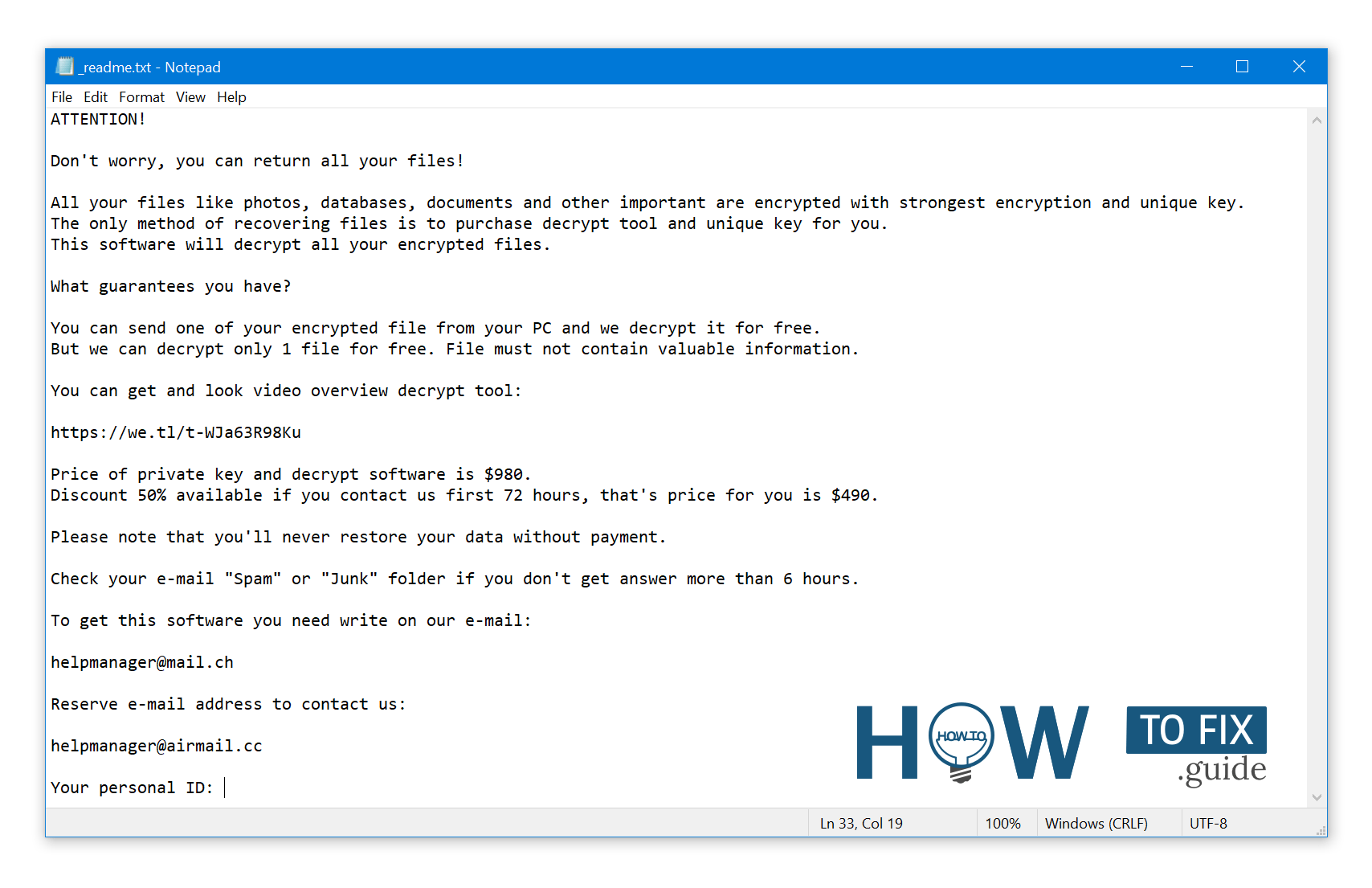
_readme.txt (STOP/DJVU Ransomware) – The scary alert demanding from users to pay the ransom to decrypt the encoded data contains these frustrating warnings
Wayn ransomware operates by employing a set of processes to carry out different tasks on the victim’s computer. One of the first processes launched is winupdate.exe, which displays a counterfeit Windows update prompt during the attack. This deceptive tactic aims to convince the victim that a sudden system slowdown is caused by a Windows update. Simultaneously, the ransomware initiates another process (usually named with four random characters) that scans the system for target files and encrypts them. Furthermore, the ransomware deletes Volume Shadow Copies from the system using the following CMD command:
vssadmin.exe Delete Shadows /All /Quiet
Once deleted, restoring the previous state of the computer becomes impossible using System Restore Points. The ransomware operators deliberately eliminate any Windows OS-based methods that could assist the victim in file restoration free of charge. Additionally, the criminals modify the Windows HOSTS file by adding a list of domains and mapping them to the localhost IP. Consequently, when attempting to access any of the blocked websites, the victim encounters a DNS_PROBE_FINISHED_NXDOMAIN error.
We observed that the ransomware deliberately blocks websites that publish various how-to guides for computer users. It is evident that by restricting specific domains, the criminals attempt to hinder the victim’s access to relevant and helpful information regarding ransomware attacks. The virus also saves two text files on the victim’s computer, containing attack-related details: the victim’s public encryption key and personal ID. These files are named bowsakkdestx.txt and PersonalID.txt.
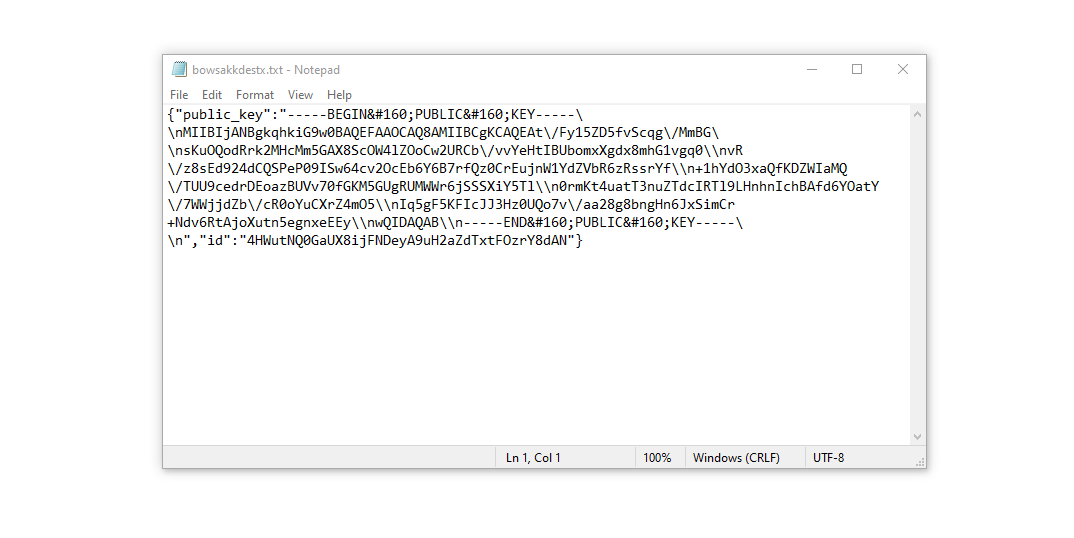
Even after these modifications, the malware does not cease its activities. Variants of STOP/DJVU ransomware often deploy the Vidar password-stealing Trojan on compromised systems. This threat possesses an extensive range of capabilities, including:
- Stealing Steam, Telegram, Skype login/password credentials;
- Stealing cryptocurrency wallets;
- Downloading and executing malware on the computer;
- Stealing browser cookies, saved passwords, browsing history, and more;
- Viewing and manipulating files on the victim’s computer;
- Enabling hackers to remotely perform various tasks on the victim’s computer.
The DJVU/STOP ransomware family employs the AES-256 cryptographic algorithm. Consequently, if your data has been encrypted with a unique online decryption key, it becomes impossible to decrypt the files without that specific key.
In the event that Wayn operated in online mode, gaining access to the AES-256 key is unattainable. The key is stored on a remote server controlled by the criminals who propagate the ransomware.
To obtain the decryption key, a payment of $980 is required. The victims are instructed to contact the fraudsters via email ([email protected]) to receive payment details.
The message by the ransomware states the following information:
ATTENTION! Don't worry, you can return all your files! All your files like photos, databases, documents and other important are encrypted with strongest encryption and unique key. The only method of recovering files is to purchase decrypt tool and unique key for you. This software will decrypt all your encrypted files. What guarantees you have? You can send one of your encrypted file from your PC and we decrypt it for free. But we can decrypt only 1 file for free. File must not contain valuable information. You can get and look video overview decrypt tool: https://we.tl/t-WJa63R98Ku Price of private key and decrypt software is $980. Discount 50% available if you contact us first 72 hours, that's price for you is $490. Please note that you'll never restore your data without payment. Check your e-mail "Spam" or "Junk" folder if you don't get answer more than 6 hours. To get this software you need write on our e-mail: [email protected] Reserve e-mail address to contact us: [email protected] Your personal ID: XXXXXXXXXXXXXXXXXXXXXXXXXXXXXXX
Do not pay for ransom!
Please, try to use the available backups, or Decrypter tool
The _readme.txt file instructs computer owners to contact Wayn representatives within 72 hours of their files being encrypted. It promises a 50% rebate if contacted within this timeframe, reducing the ransom amount to $490. However, it is strongly advised not to pay the ransom.
I highly recommend that you refrain from contacting these fraudsters and avoid making any ransom payments. One of the most effective solutions to recover lost data is to utilize available backups or use a decryption tool like Decrypter from Emsisoft.
It’s important to understand that ransomware viruses, including Wayn, employ a similar process to generate a unique decryption key for recovering encrypted data. Unless the ransomware has significant flaws or is still in the development stage, manual recovery of the encrypted data is not possible. Regularly backing up your critical files is the best way to prevent the loss of valuable data.
Remember that even if you maintain regular backups, they should be stored in a separate location and not connected to your main workstation. This could be a USB flash drive, an external hard drive, or an online (cloud) storage service. Storing backups on your main PC is not advisable, as they can also be encrypted along with other data in the event of an attack.
How I was infected?
Ransomware has a various methods to built into your system. But it doesn’t really matter what concrete way was used in your case.

Wayn virus attack following a successful phishing attempt.
However, there are several common methods through which the Wayn virus can infiltrate your PC:
- Hidden installation bundled with other applications, particularly utilities that are offered as freeware or shareware.
- Deceptive links in spam emails that lead to the installation of the virus.
- Utilizing online free hosting resources.
- Downloading pirated software from illegal peer-to-peer (P2P) resources.
In some cases, the Wayn virus may masquerade as a legitimate tool, such as through messages demanding unwanted software or browser updates. This is a tactic employed by online fraudsters to manipulate users into manually installing the ransomware.
Typically, the deceptive update alert will not indicate that it will result in the installation of the virus. It will be disguised as an alert prompting you to update Adobe Flash Player or another dubious program.
Using cracked apps or engaging in illegal P2P activities can also lead to damage and the injection of serious malware, including the Wayn ransomware.
To summarize, what can you do to prevent the infiltration of the Wayn ransomware into your device? While there is no foolproof method, here are some tips to reduce the risk of infection:
1. Exercise caution when installing free software and carefully read all the additional offers presented during the installation process.
2. Avoid opening suspicious email attachments and refrain from opening files from unknown senders.
3. Keep your security program updated at all times.
It’s important to note that the malware does not openly reveal itself and will not appear in the list of installed programs. Instead, it operates discreetly as a malicious process running in the background from the moment your computer is launched.
How To Remove Wayn Virus?
In addition to encode a victim’s files, the Wayn infection has also started to install the Vidar Stealer on system to steal account credentials, cryptocurrency wallets, desktop files, and more.
Download Removal Tool.
You can download GridinSoft Anti-Malware by clicking the button below:
Run the setup file.
When setup file has finished downloading, double-click on the setup-antimalware-fix.exe file to install GridinSoft Anti-Malware on your system.

An User Account Control asking you about to allow GridinSoft Anti-Malware to make changes to your device. So, you should click “Yes” to continue with the installation.

Press “Install” button.

Once installed, Anti-Malware will automatically run.

Wait for complete.
GridinSoft Anti-Malware will automatically start scanning your computer for Wayn infections and other malicious programs. This process can take a 20-30 minutes, so I suggest you periodically check on the status of the scan process.

Click on “Clean Now”.
When the scan has finished, you will see the list of infections that GridinSoft Anti-Malware has detected. To remove them click on the “Clean Now” button in right corner.

Trojan Killer for special instances
In some certain instances, Wayn ransomware can block the running of setup files of different anti-malware programs. In this situation, you need to utilize the removable drive with a pre-installed antivirus tool.
There is a really little number of security tools that are able to be set up on the USB drives, and antiviruses that can do so in most cases require to obtain quite an expensive license. For this instance, I can recommend you to use another solution of GridinSoft – Trojan Killer Portable. It has a 14-days cost-free trial mode that offers the entire features of the paid version 4. This term will definitely be 100% enough to wipe malware out.
WAYN Ransomware Removal – Video Guide
How To Decrypt .wayn Files?
How to restore big .wayn files?
Try removing .wayn extension on a few BIG files and opening them. Either the Wayn ransomware read and did not encrypt the file, or it bugged and did not add the filemarker. If your files are very large (2GB+), the latter is most likely. Please, let me know in comments if that will work for you.
The newest extensions released around the end of August 2019 after the criminals made changes. This includes Gayn, Aghz, Agpo, Agvv, etc.
As a result of the changes made by the criminals, STOPDecrypter is no longer supported. It has been removed and replaced with the Emsisoft Decryptor for STOP Djvu Ransomware developed by Emsisoft.
You can download free decryption tool here: Decryptor for STOP Djvu.
Download and run decryption tool.
Start downloading the decryption tool.
Make sure to launch the decryption utility as an administrator. You need to agree with the license terms that will come up. For this purpose, click on the “Yes” button:
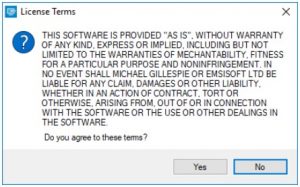
As soon as you accept the license terms, the main decryptor user interface comes up:
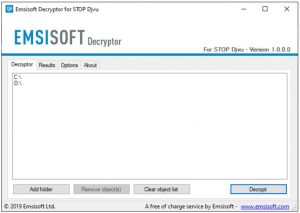
Select folders for decryption.
Based on the default settings, the decryptor will automatically populate the available locations in order to decrypt the currently available drives (the connected ones), including the network drives. Extra (optional) locations can be selected with the help of the “Add” button.
Decryptors normally suggest several options considering the specific malware family. The current possible options are presented in the Options tab and can be activated or deactivated there. You may locate a detailed list of the currently active Options below.
Click on the “Decrypt” button.
As soon as you add all the desired locations for decryption into the list, click on the “Decrypt” button in order to initiate the decryption procedure.
Note that the main screen may turn you to a status view, letting you know of the active process and the decryption statistics of your data:
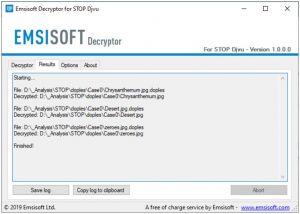
The decryptor will notify you as soon as the decryption procedure is completed. If you need the report for your personal papers, you can save it by choosing the “Save log” button. Note that it is also possible to copy it directly to your clipboard and to paste it into emails or messages here if you need to do so.
The Emsisoft Decryptor might display different messages after a failed attempt to restore your wayn files:
✓ Error: Unable to decrypt file with ID: [your ID]
✓ No key for New Variant online ID: [your ID]
Notice: this ID appears to be an online ID, decryption is impossible
✓ Result: No key for new variant offline ID: [example ID]
This ID appears be an offline ID. Decryption may be possible in the future.
It can take a few weeks or months until the decryption key gets found and uploaded to the decryptor. Please follow updates regarding the decryptable DJVU versions here.
✓ Remote name could not be resolved
How to Restore .wayn Files?
In some case Djvu ransomware is not doom for your files…
Wayn ransomware encryption mechanism feature is next: it encrypts every file byte-by-byte, then saves a file copy, deleting (and not overriding!) the original file. Hence, the information of the file location on the physical disk is lost, but the original file is not deleted from the physical disk. The cell, or the sector where this file was stored, can still contain this file, but it is not listed by the file system and can be overwritten by data that has been loaded to this disk after the deletion. Hence, it is possible to recover your files using special software.
I recently fell victim to the Wayn virus, which managed to evade detection from two antivirus software programs and two malware fighters.
Unfortunately, I soon discovered that the virus operated through an online algorithm, making it impossible to recover my encrypted files. Even my backup drive, which was connected during the virus attack, fell victim to infection. Every folder within the backup drive was encrypted. Despite the loss of some important files, I was able to retrieve almost 80% of my 2TB storage.
During my examination of the folders, I noticed the presence of a ransom note, readme.txt, in every folder. Upon closer inspection, I realized that all files located directly within a folder had been encrypted, except for those contained within subfolders. This discovery provided a glimmer of hope. While all folders, including subfolders, within my C and D drives had been encrypted, the same did not apply to the backup drive. Creating subfolders within a folder turned out to be a saving grace, allowing me to recover 80% of my data.
I believe this to be a small loophole specific to the backup drive. Additionally, I managed to find an additional 10% of my data on another hard drive connected to a different PC. Therefore, my advice to others facing a similar situation is to create subfolders when using a backup drive. I consider myself fortunate in this regard, although unlucky that the virus struck while I was in the process of transferring files from my backup.
I hope that sharing my experience can assist others who find themselves in a similar predicament.
Jamie NewlandRecovering your files with PhotoRec
PhotoRec is an open-source program, which is originally created for files recovery from damaged disks, or for files recovery in case if they are deleted. However, as time has gone by, this program got the ability to recover the files of 400 different extensions. Hence, it can be used for data recovery after the ransomware attack
At first, you need to download this app. It is 100% free, but the developer states that there is no guarantee that your files will be recovered. PhotoRec is distributed in a pack with other utility of the same developer – TestDisk. The downloaded archive will have TestDisk name, but don’t worry. PhotoRec files are right inside.
To open PhotoRec, you need to find and open “qphotorec_win.exe” file. No installation is required – this program has all the files it need inside of the archive, hence, you can fit it on your USB drive, and try to help your friend/parents/anyone who was been attacked by DJVU/STOP ransomware.
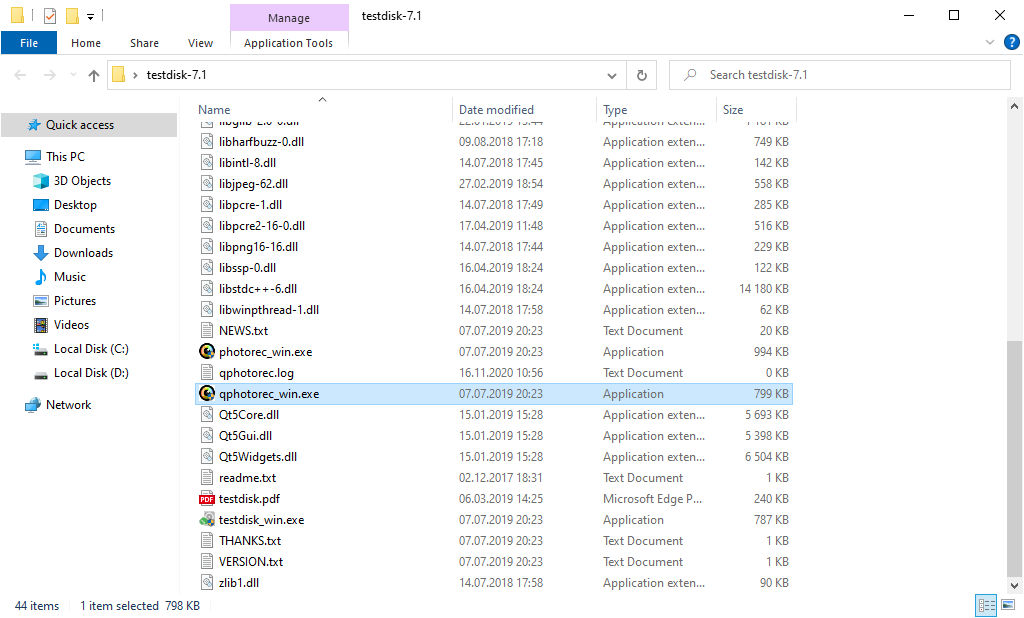
After the launch, you will see the screen showing you the full list of your disk spaces. However, this information is likely useless, because the required menu is placed a bit higher. Click this bar, then choose the disk which was attacked by ransomware.
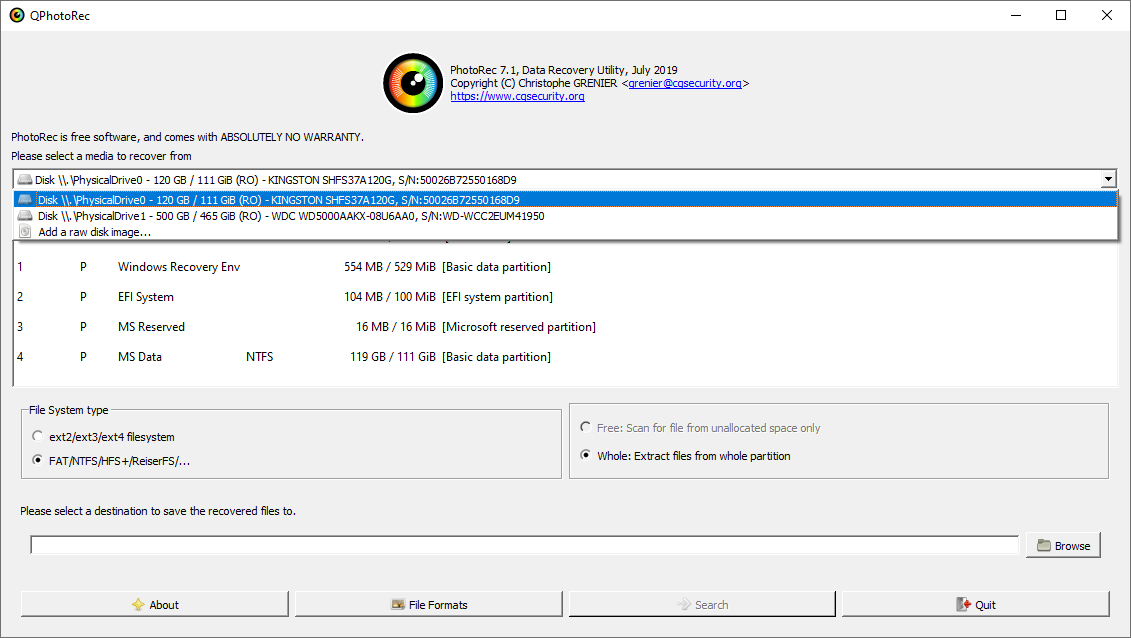
After choosing the disk, you need to choose the destination folder for the recovered files. This menu is located at the lower part of the PhotoRec window. The best desicion is to export them on USB drive or any other type of removable disk.
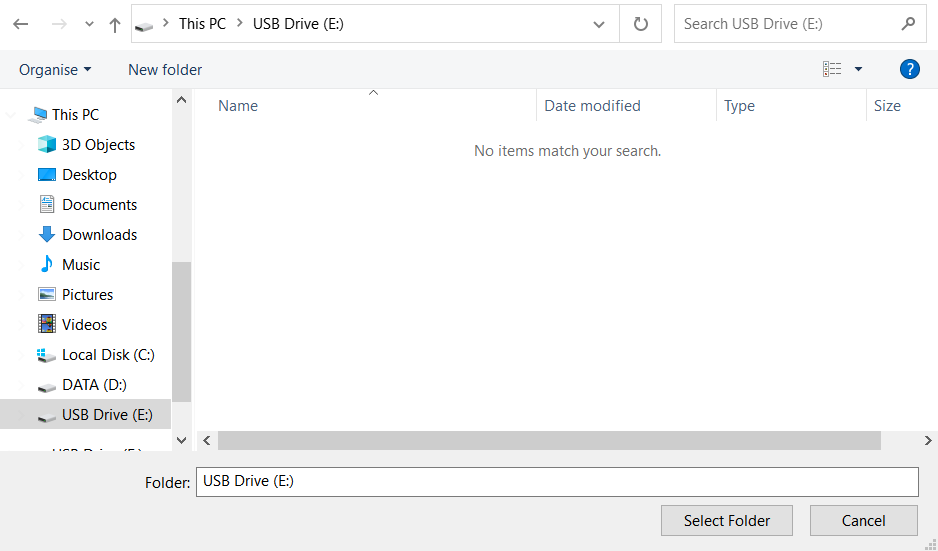
Then, you need to specify the file formats. This option is located at the bottom, too. As it was mentioned, PhotoRec can recover the files of about 400 different formats.
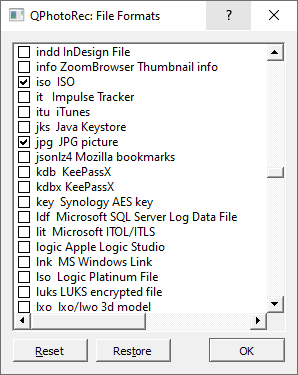
Finally, you can start files recovery by pressing the “Search” button. You will see the screen where the results of the scan and recovery are shown.
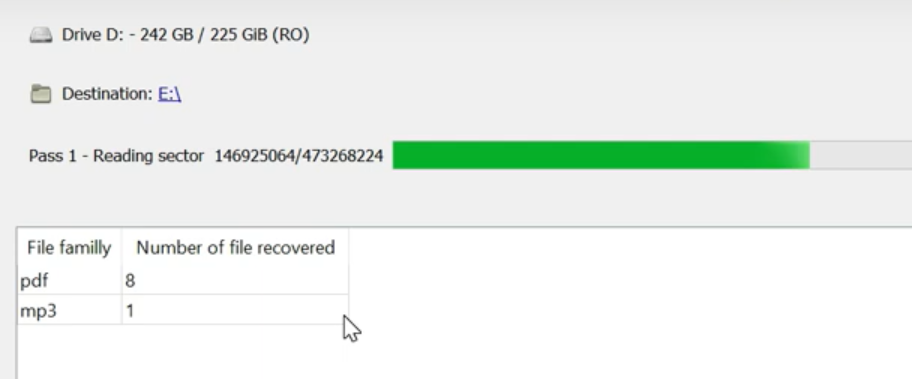
Wayn files recovery guide
Frequently Asked Questions
Unfortunately, encrypted files are encrypted by the ransomware and cannot be accessed until they are decrypted.
If you have valuable data stored in the .wayn files, it is possible that you have a backup copy of those files. If not, you can try restoring them using the system function called “Restore Point.” However, please note that decrypting the files may require patience and alternative methods.
No, using GridinSoft Anti-Malware is primarily intended to remove active system infections caused by Wayn ransomware. Your encrypted files are not a threat to your computer, but it is important to eliminate the active malware to prevent further malicious actions, such as installing keyloggers or backdoors.
In this situation, it is recommended to prepare a memory stick with a pre-installed Trojan Killer. This will help in dealing with the Wayn virus and its impact on your PC.
Please be patient as you may have been infected with a new version of the STOP/DJVU ransomware, and the decryption keys have not been released yet. Stay updated with the latest news on our website to be informed about any new Wayn keys or decryption programs that become available.
It’s important to note that the Wayn ransomware only encrypts the first 150KB of files. As a result, some media players like Winamp may still be able to play MP3 files, although the first 3-5 seconds (which are encrypted) will be missing. In the meantime, you can try to retrieve original copies of the files that were encrypted, such as files downloaded from the internet, pictures shared with family and friends, photos uploaded on social media or cloud services, attachments in emails, or files stored on older devices or memory cards.
If the guide doesn’t help you to remove Wayn infection, please download the GridinSoft Anti-Malware that I recommended. Do not forget to share your experience in solving the problem. Please leave a comment here! This can help other victims to understand they are not alone. And together we will find ways to deal with this issue.
I need your help to share this article.
It is your turn to help other people. I have written this guide to help users like you. You can use buttons below to share this on your favorite social media Facebook, Twitter, or Reddit.
Daniel ZimmermanWAYN Ransomware — How To Restore & Decrypt Files?
Name: WAYN Virus
Description: The WAYN Virus is a part of the STOP/DJVU family of ransomware infections, which encrypts a wide range of file types, such as videos, photos, and documents. The encrypted files can be identified by their unique ".wayn" extension. Consequently, the affected files become inaccessible and unusable.
Offer price: 0.0
Operating System: Windows
Application Category: Virus
User Review
( votes)References
- Virustotal sample of WAYN: https://www.virustotal.com/gui/file/5d3e1421b5ebdc30db58bddd0711c7f9
- My files are encrypted by ransomware, what should I do now?
- About DJVU (STOP) Ransomware.
- Trojan Killer Review: https://howtofix.guide/trojan-killer/
![]() German
German ![]() Japanese
Japanese ![]() Spanish
Spanish ![]() Portuguese (Brazil)
Portuguese (Brazil) ![]() French
French ![]() Turkish
Turkish ![]() Chinese (Traditional)
Chinese (Traditional) ![]() Korean
Korean


